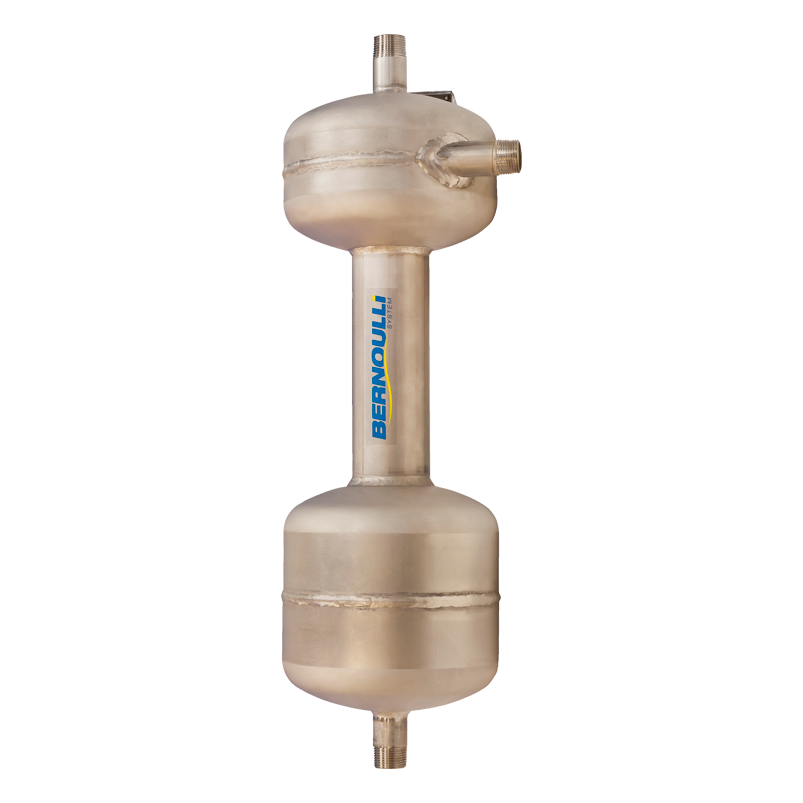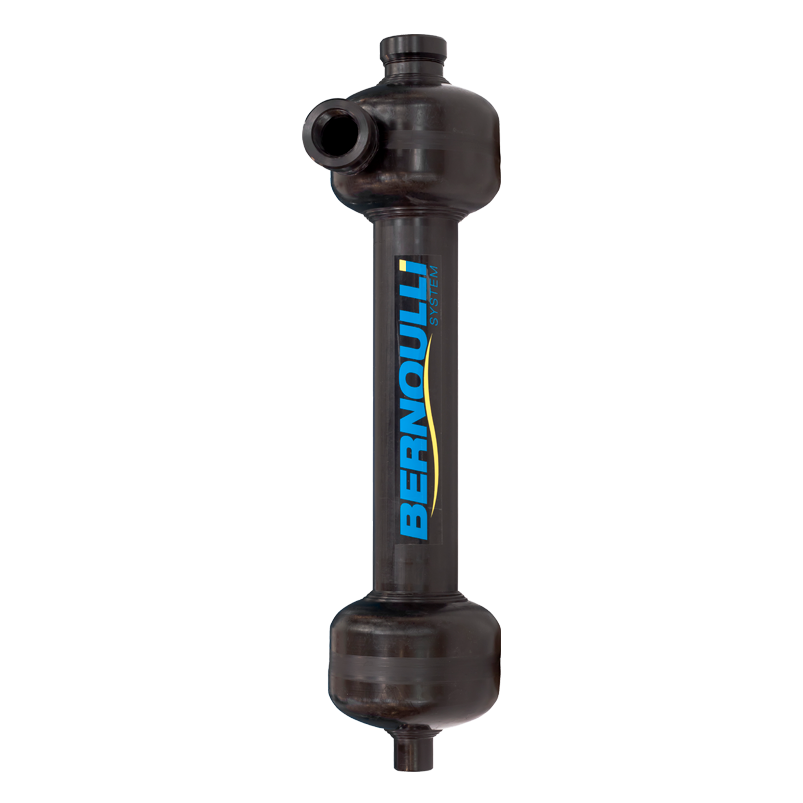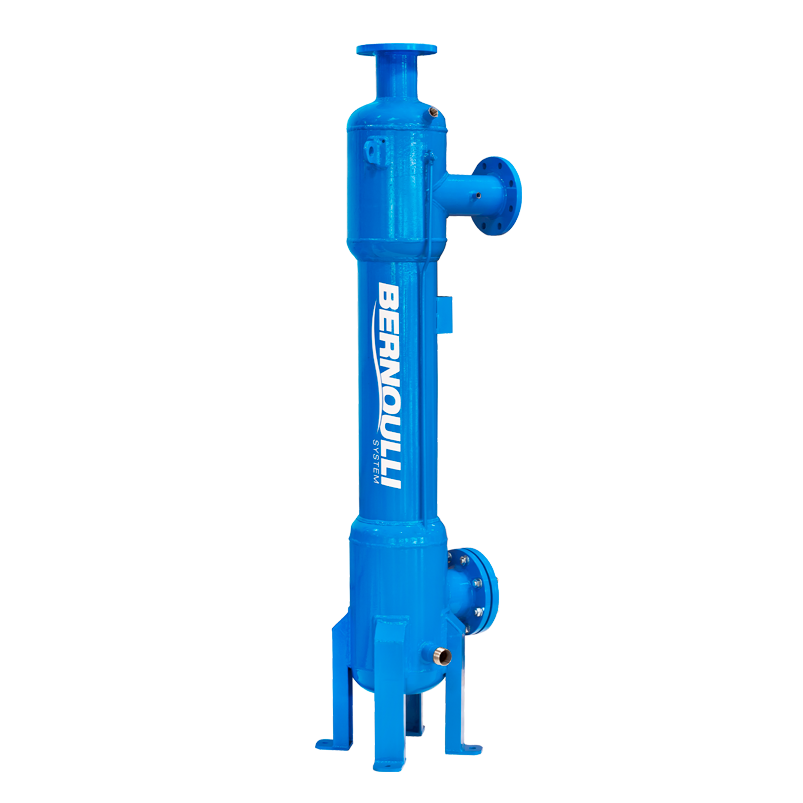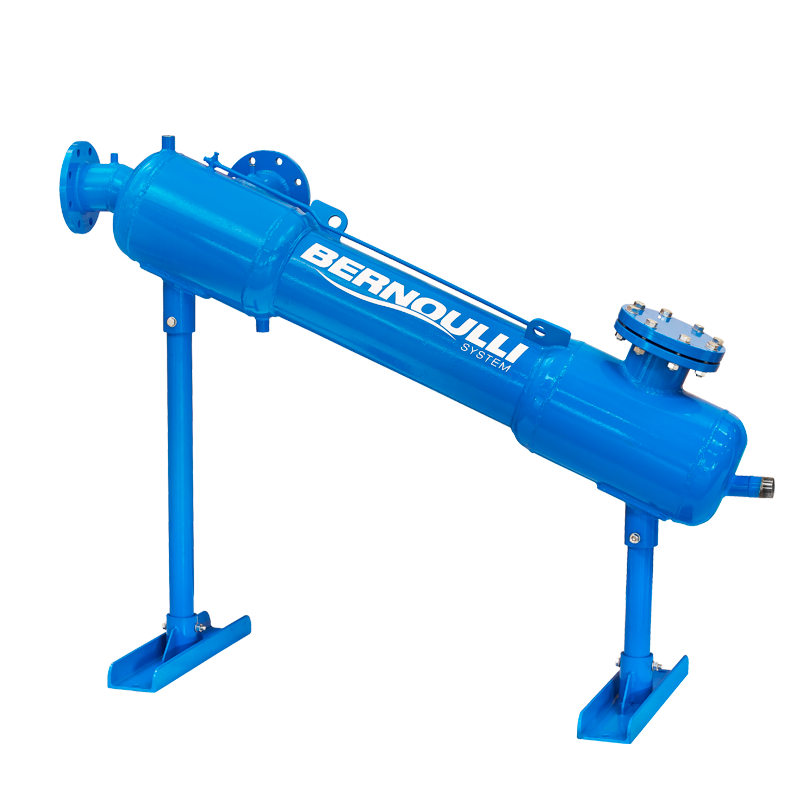Centrifugal Separators
Our centrifugal separators are available in four standard product lines; CXW, CPW, CXWV and CXWL
A centrifugal separator is not actually a filter since there is no screen element inside to filter out the particles. The separation is instead ensured by means of centrifugal force, and the separator’s efficiency is directly proportional to the specific density and size distribution of the particles. The centrifugal separator eliminates 98% of all particles with a specific gravity of 2.6-2.8 (such as sand) down to a size of 75 microns, provided that the pressure loss over the unit is minimum 0.3 bar.
Centrifugal separators should be installed downstream of the feed pump in order to ensure enough pressure during purging, and to overcome the pressure drop over the unit.

Advantages of centrifugal separators from Bernoulli System
- Separation occurs without any interruption to the flow
- Very little liquid is lost by purging
- No need for any consumable material
- Zero maintenance
- Separation efficiency
- Specific gravity table
Working principle
A. A liquid containing particles is fed tangentially into the cylindrical top of the centrifugal separator to create rotation. Passing through slots in the intake chamber, the flow velocity is further accelerated.
B. The centrifugal force moves heavy particles to the sides of the barrel. They move downwards and accumulates in the collection chamber in the bottom of the separator.
C. A deflector plate, located in the top of the collection chamber, changes the direction of flow.
D. Solid-free liquid moves upwards inside the vortex and exits via the separator’s top outlet.
E. The separated solids are either periodically or continuously purged from the collection chamber.
...

CXW
The CXW product line consists of ten models in sizes DN 10-100, covering capacities from as low as 0.7 m3/h up to 90 m3/h. This range comes in three different materials: carbon steel (CKW), stainless steel AISI 304 (CRW) and stainless steel AISI 316 (CSW).

CPW
The CPW product line consists of the smallest centrifugal separators, in five sizes ranging from DN15 to DN40 and covering capacities up to 16 m3/h. The CPW product line is particular interesting in applications with aggressive liquids, since the material of construction is HD polyethylene.

CXWV
The CXWV product line covers the upper capacity range, from 65 m3/h to 2700 m3/h, with ten models in sizes DN 100-500. It comes in three different materials: carbon steel (CKWV), stainless steel AISI 304 (CRWV) and stainless steel AISI 316 (CSWV). The mounting position is vertical, and to support it, legs are included. A variant of the CXWV product line permits the intake chamber to be dismounted.

CXWL
The CXWL product line is the near twin of the CXWV product line. The only difference is that they have leaning support legs to support installations with height limitations. Available sizes are DN100-500, with capacities of up to 2700 m3/h. The CXWL product line comes in three different materials: carbon steel (CKWV), stainless steel AISI 304 (CRWV) and stainless steel AISI 316 (CSWV). Like the CXWV product line, the CXWL is available in dismountable models.
...
Purge system
To drain off the suspended solids accumulated in the collection chamber of the centrifugal separator, either a manual discharge drain or an automatic discharge system can be used. Both are available from Bernoulli.
For the automatic discharge system, purging intervals and duration can both be easily adjusted. The automatic discharge system comes in two versions: electrical and pneumatic.
Both purge systems include a ball valve, an actuator and a time controller. The manual discharge drain consists of a ball valve with a hand lever.
Case:
Alps Electric Malaysia
Alps Electric Malaysia is situated in Nilai, just south of Kuala Lumpur. In order to secure a smooth running manufacturing process, Alps Electric Malaysia requires clean water that contains next to no particles. This would turn out to be somewhat of a problem as waste water from cooling towers was being used in the production.
The water needed to be properly filtered and the company’s choice fell on Bernoulli, as in their opinion only Bernoulli’s filter technology would be good enough.
The Bernoulli Principle
The distinguishing feature of a Bernoulli Filter is a disc mounted on a pneumatic cylinder, which enables contactless cleaning of the filter. The cleaning sequence itself is automatic and continuous, requiring no manual intervention.